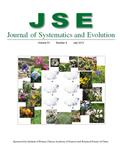Ling-Feng MAO, Sheng-Bin CHEN, Jin-Long ZHANG, Yan-Hui HOU,Guang-Sheng ZHOU, Xin-Shi ZHANG
The Qinghai–Tibetan Plateau (QTP), known as “the Roof of the World”, is one of the most unique and vulnerable biodiversity regions on Earth. However, the spatial patterns and determinants of vascular plant diversity on the QTP are still poorly documented, despite a number of publications focusing on its flora. Using extensively compiled data gathered from local flora and specimen records, we evaluated the relative importance of water, energy, and habitat heterogeneity-related variables in shaping the distribution of vascular plant diversity (species, genus, family, herb, woody plants). We found that higher richness always occurred in the south and east of the QTP, especially along the Himalayas, and that habitat heterogeneity, water, and energy variables are important determinants of vascular plant richness patterns on the QTP. The explanatory power of most single predictors was obviously different across life forms, with woody plant richness generally more sensitive to most environmental factors than herb richness. In addition, the explanatory power of habitat heterogeneity models, combined water and energy models, and environmental models increased as the taxonomic level increased from species to family. The results highlight that correlations between plant richness and environmental variables vary with life form and taxonomic scale, and suggest that the explanatory power of variables will change in different spatial scales due to the proportion of life forms and the asymmetric effects of these drivers on life form richness.

